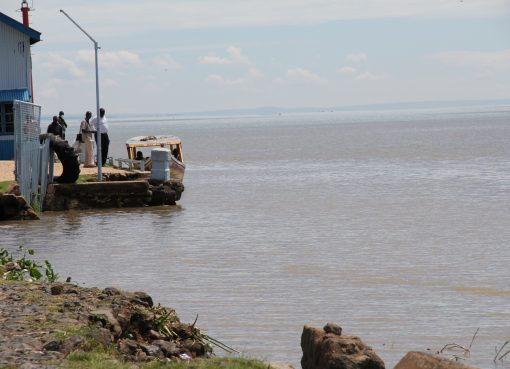Residents of Nakuru County are set to benefit from an ongoing World Bank-funded water treatment and de-fluoridation plants that will supply them with fluoride-free drinking water.
County Executive Committee Member (CECM) for Lands, Physical Planning, Housing and Urban Development Mr John Kihagi said the initiative that is part of the second phase of the World Bank-funded Kenya Informal Settlement Improvement Project (KISIP) encompasses various components, including the backfilling and installation of 7.8 km of water pipes, two treatment plants and, the renovation of an elevated steel tank.
The CECM regretted that overreliance by residents particularly in parts of Gilgil and Naivasha counties on underground water sources had exposed them to risks of suffering from dental fluorosis and crippling skeletal deformities.
Mr Kihagi however said there were plans to increase the number of alternative fluoride-free water sources in the devolved unit, noting that there were high concentrations of fluoride in the county’s boreholes sometimes way above the 1.5 milligrams per litre allowed by the World Health Organization (WHO).
“Our experts have been working round the clock in all the 11 sub-counties to identify fluoride-free areas that will see more boreholes established to help meet rising water demand,” stated Kihagi.
Mr. Kihagi was speaking during a consultative meeting at the County headquarters between engineers tasked with the installation of de-fluoridation units, the Settlement Executive Committee (SEC) and Grievance Redress Committee (GRC).
The CECM explained that uunderground water sources in Naivasha, Njoro, Nakuru Town West, Gilgil, Nakuru East and Bahati Sub-Counties had been singled out as having high concentrations of fluoride in the devolved unit.
According to a study commissioned by the County Government, fluoride levels range between 2.15mg/litre to as high as 6.5 mg/litre in the fifteen boreholes sampled during the analysis carried out at the water quality testing laboratory.
The CECM however assured that Governor Susan Kihika’s administration was committed to minimising the impact of fluoride in all the sub-counties, by ensuring that its Water Service Providers were supplying “blended water” to the residents which is within the recommended levels by WHO.
He said the project had two river sources, one emanating from Dundori where they get about four million litres per day and the other water from Malewa river where the waters are channelled into the treatment plants for blending with waters from underground sources.
Nakuru Water and Sanitation Services Company (Nawassco) sources its water from 25 boreholes; one in Kiondo, eight in Kabatini, three in Nairobi Road, five in Baharini, and eight in Olobanitaa within the county.
Mr Kihagi said the company serves a population of more than one million during the day and approximately 530,000 people during the night.
The Naivasha Water and Sanitation Company Limited (Naivawasco) gets its raw water from 13 boreholes, located in six production sites. It serves a population of about 170, 000 out of the 198,444 people, according to the 2019 census.
The CECM further stated that the devolved unit’s administration was supporting initiatives towards developing water distribution networks that include water kiosks fitted with de-fluorination filters using “local bone char technology.”
“These filters have reduced fluoride levels from 9 mg/litre to below 1.5 mg/litre, greatly improving the quality of consumption water and reducing the risk of fluorosis and a host of other harmful health effects. We are encouraging adoption of these small bone char de-fluoridation units, some which can be used at home,” said the CECM.
Fluoride is a chemical compound that occurs naturally on the earth’s crust. It is formed during rock formation and is a chemical ion of chlorine.
Scientists say millions of Kenyans are at risk of serious bone defects and dental discolouration as a result of high levels of fluoride in their drinking water.
The risk is made worse by the fact that as the rest of the world moves to treated and piped water systems, more than half of Kenyans (56 per cent) still rely on underground water, which the Kenya National Bureau of Statistics (KNBS) defines as, among others, water fetched from wells and boreholes.
Data from Kenya Society for Fluoride Research further shows that 19 million Kenyans suffer from fluorosis, affecting the teeth and/or skeleton, depending on the length of time one has been exposed to water with a high concentration of fluoride, and their geographical location.
By Esther Mwangi





